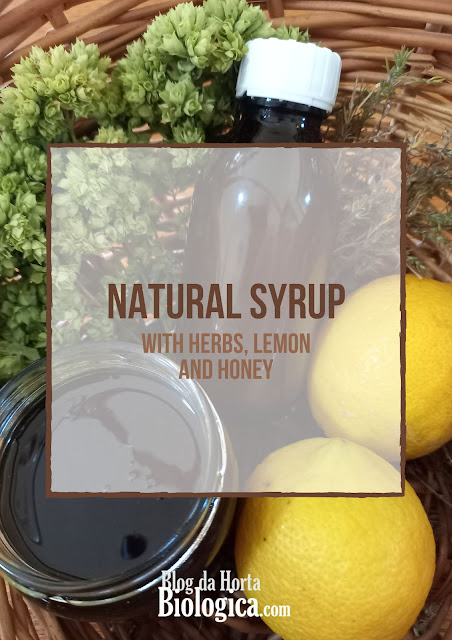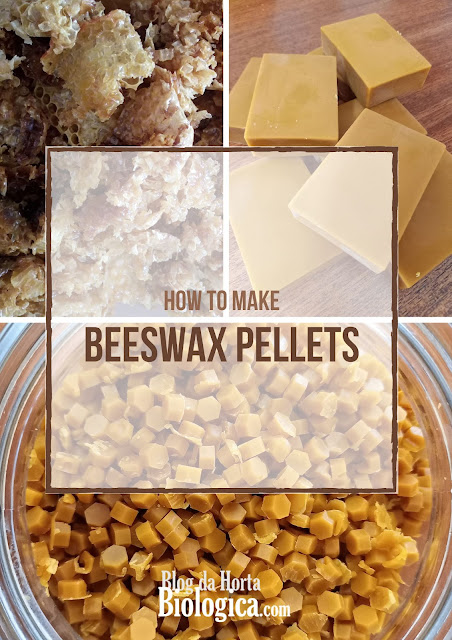Coconut soap has many benefits for the skin and hair, as well as many other ways to use in household cleaning and gardening. However, it is important to know that coconut soap is made differently for self-care and for home and garden care. We've already shown here on the blog How to Make Coconut Soap for use as a natural insecticide. In this post, we'll show you how to make it to use in personal hygiene. At the end of this post, you may also watch our step-by-step video on how to make this soap.
Benefits of Coconut Soap
A 100% coconut soap contains coconut oil as its only fat. Coconut oil which is known to have numerous properties and various internal and external uses.
Although there is some controversy in the properties attributed to coconut oil, it is considered to be an excellent ally of skin and hair health.
So that this post doesn't get too long, we'll start by talking a bit about the benefits of coconut for external use, and then we'll show you how to make this soap. In another post, we will delve deeper into the properties of coconut oil.
Skin
- Moisturizer. Because of its nourishing properties, coconut soap helps to keep skin moisturized and to prevent excessive dryness.
- Emollient. Helps maintain skin elasticity. The use of coconut on the skin has also been associated with relieving dermatitis and reducing allergies and other skin reactions.
- Anti-aging. Because of its high concentration of antioxidants, including vitamin E, it helps prevent premature aging.
- Deep cleansing. Coconut soap is very effective in cleansing the skin, helping to remove makeup very well, clean pores and eliminate residues.
Hair
- Lubricant. Because it is so rich in vitamin E, triglycerides and fatty acids, coconut moisturizes and adds shine to hair, forming a lubricating film on the strands, preventing dryness and helping in the recovery of dull and damaged hair.
- Against hair loss. Although not many studies have been done on this subject yet, coconut is considered to help strengthen hair strands and improve the appearance of hair ends.
- Deep cleansing. It cleanses the scalp very well while maintaining its natural fat layer. In addition, coconut has anti-bacterial properties that help maintain the health of the scalp.
Although all these properties are attributed to coconut oil, it is always good to remember that, in case of skin diseases, it is imperative to see a dermatologist before trying any product on the skin.
Important Info on Soap Making
If you have never made soap at home, it is important to know more about soap making and safety rules before moving on to the recipe. This information is very important and can also be found in our posts: How To Make Coconut Soap – Cold Process Step-by-step and Its Various Ways of Use and Olive Oil Soap: How to Make It and Its Benefits. In this post we will remind you of important information about soap making and explain the difference between this soap and coconut soap used as a natural insecticide.
What Is Soap?
Soap is a salt of fatty acids that is obtained through the chemical reaction between a fat and alkali. This reaction is called saponification.
The mandatory materials for making soap are alkali (sodium or potassium hydroxide), fats (oils, butters and waxes) and water (distilled - do not use tap water).
This recipe is made by the cold process, in which all the ingredients are handled at low temperatures, in contrast to the hot process in which a crock pot is used.
Cold Process
This recipe is made by the cold process, in which all the ingredients are handled at low temperatures, in contrast to the hot process in which a crock pot is used.
In the cold process it is easier to control the final result. However, the time to cure is longer.
What Is The Cure?
The cure is the necessary time for soap to lose water and stabilize the pH. The curing time for a 100% coconut soap for the skin is 6 weeks.
How To Know The pH?
Soap, in a cold process, is alkaline and the pH varies between values 8 and 10. During the curing process, pH measuring strips can be used to know whether the soap needs to cure for a longer time.
For more info, visit our post: How To Test the pH of Soap
Superfat
Superfat is the extra fat in soap so that it is emollient and doesn't hurt the skin.
Coconut Soap For The Skin vs Coconut Soap For Cleaning
Coconut soap for the skin does have superfat in its formula. This means that it is a soft soap and can be used safely on both skin and hair.
Coconut soap for cleaning does not have superfat in its formula. This means that coconut soap for cleaning is aggressive for the skin, for it has the capacity to remove its natural fat layer. On the other hand, it is excellent for cleaning due to its detergent power and capacity to remove grease and dirt.
Mandatory Safety Equipment
Due to the handling of caustic soda, it is necessary to take special care. This is the mandatory safety equipment:
- Long-sleeved lab coat
- Rubber gloves
- Mask
- Safety goggles
- Closed footwear
Ingredients For This Recipe
- 415g Coconut oil. Ideally, you should use extra virgin cold-pressed coconut oil as it contains more nutrients and health benefits for both skin and hair.
- 146g Distilled water
- 57g Caustic soda - Sodium Hydroxide 99% (NaOH)
- 8g Lavender Essential Oil*
- 3g Tea Tree Essential Oil*
*The essential oils are optional. If you have sensitive and reactive skin you can make this recipe without the essential oils.
This recipe will yield about 600g of soap. The weight will always vary after curing.
Materials Needed To Make This Soap Recipe
- 1 Kitchen scale
- 1 Stainless steel pan (never use aluminum as it reacts with soda)
- 4 Measuring containers (glass, stainless steel, or plastic - do not use aluminum)
- 1 Feeding syringe (optional to measure the oil without spillage)
- 1 Stainless steel spoon
- 1 Silicone spatula
- 1 Digital Laser Thermometer
- 1 Hand blender (exclusive for this purpose)
- Cling film
- 1 Tray
- 1 Wooden or Silicone mold (you can make bar soap or individual doses)
- 1 Soap cutter (optional). Will be useful if you make bar soap.
- 2 Cloths
- Ice + 1 large container for cold water bath*
- pH measuring strips
- Cotton bags, cardboard boxes or paper to wrap the soap after the cure
* This container is optional, as the cold water bath can also be made in the sink, if it has enough space.
Important Safety Rules
- Work without distractions. Do not eat, drink, smoke, watch TV, listen to radio or answer the phone. Have no children and pets around.
- When weighing ingredients, always round the values down, never up.
- Never use aluminum, as it reacts with caustic soda.
- Handle the hydroxide in a well ventilated area, using the safety equipment.
- Have vinegar at hand because, in case of spillage, it cuts the effect of soda.
- Wash utensils only 24h later. Use gloves, as it will still be very caustic.
Step-By-Step (Video At The End)
- Gather all the material.
- Weigh the ingredients.
- Due to the volatility of the essential oils, you must cover their container with a cloth or a lid.
- Put the oil on the heat.
- While the oil is heating up, very carefully add the hydroxide over the water, never the other way around!
- Dissolve the hydroxide with a stainless steel spoon. Never aluminum!
- Measure the temperatures of each solution and use a cold bath to control the temperatures.
- As soon as both solutions are at 45ºC (both must be at the same temperature or with a maximum difference of 10ºC), add the water to the oil. Never the other way around!
- Mix first with a spatula and then with a hand blender (exclusive for this purpose).
- Add the essential oils.
- Mix with the hand blender until reaching the trace.
- Pour the batter into the mold and with the help of the tray shake the mold to remove air bubbles that might be in the batter.
- Wrap the mold with cling film and a cloth to help maintain the temperature.
- Isolate for 4h, without disturbing, until it hardens.
- After 4h unmold and proceed to cut (if it's a bar). For unmolding it is advisable to wear gloves.
What Is the Trace?
The trace is the point in the soap making process when oil and lye water have emulsified, that is, the point where water solution and oil mix together and form a viscous batter in which it is possible to identify lines (trace) when passing the spatula or hand blender through.
How To Store?
During the 6 weeks of curing of coconut soap, the soap bars should be stored in a place without direct sunlight and without dampness. The bars must be rotated, so that they can cure evenly.
It is very important to make a label with the date the soap was made and the approximate date of the cure, for better guidance.
The soap should only be wrapped after it has cured, using natural materials. Cotton bags, cardboard boxes, paper to wrap the soap or fabric can be used, so that the soap can maintain its quality for a longer time. The first sign that the soap is deteriorating is when yellow stains appear with a rancid odor.
If the soap is used immediately after the cure, it should be placed in soap dishes, so that water can drain and the soap can last longer. If left in water, the soap will breakdown more easily.
It is very important to make a label with the date the soap was made and the approximate date of the cure, for better guidance.
The soap should only be wrapped after it has cured, using natural materials. Cotton bags, cardboard boxes, paper to wrap the soap or fabric can be used, so that the soap can maintain its quality for a longer time. The first sign that the soap is deteriorating is when yellow stains appear with a rancid odor.
If the soap is used immediately after the cure, it should be placed in soap dishes, so that water can drain and the soap can last longer. If left in water, the soap will breakdown more easily.
Some Suggestions To Store Soap
How To Use This Soap?
This soap can be used like all other soaps that are made for cosmetic use:
- Hands
- Face
- Body, to replace shower gel
- Hair, to replace liquid shampoo. It is important to remember that hair is always a complicated matter, so this soap (or any other) may have excellent results for some people and fall short for others, if the purpose is to use it as a shampoo.
Making this soap is a great way to preserve the environment and reduce plastic packaging, which makes it a "zero waste" product. Nature thanks you, and so does your health!
With this post we hope to help all those who seek a simple and natural life.
Check out our video below, and if you haven't subscribed to our YouTube channel yet, take the opportunity to do so, if you don't want to miss a thing!







Sem comentários:
Enviar um comentário